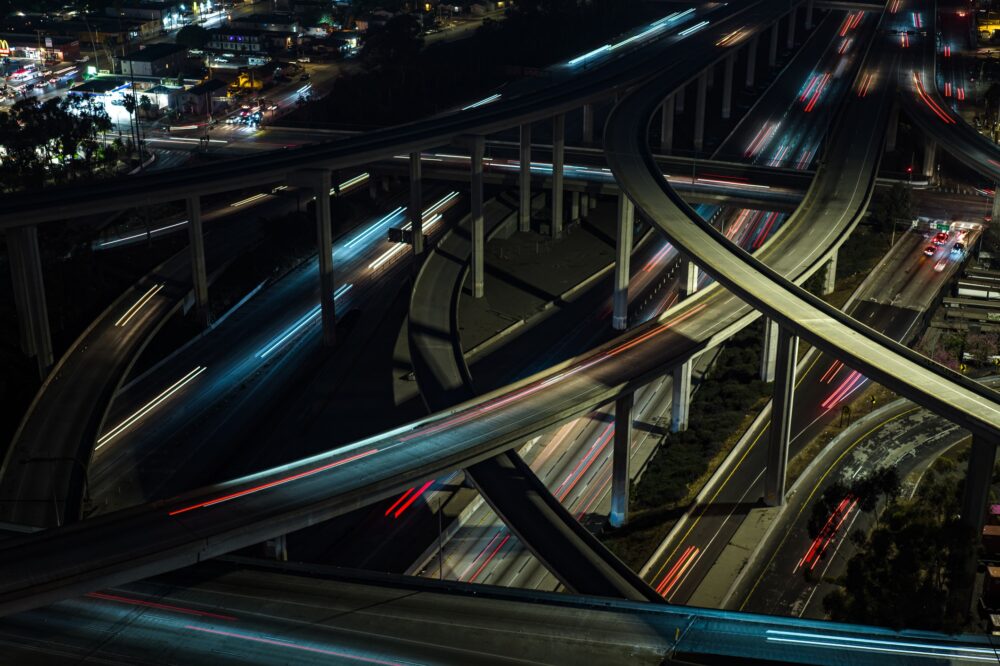Welcome to the T List, a newsletter from the editors of T Magazine. Each week, we share things we’re eating, wearing, listening to or coveting now. Sign up here to find us in your inbox every Wednesday, along with monthly travel and beauty guides, and the latest stories from our print issues. And you can always reach us at tmagazine@nytimes.com.
Stay Here
In Paris, a Hotel That Mixes Past and Present
Paris’s 17th Arrondissement, near the city’s northwestern limits, is mostly residential, so it’s not typically front of mind for visitors to the French capital. But the opening of La Fondation, a 58-room hotel with interiors by the New York-based design firm Roman and Williams, might shift that mind-set. It’s part of a new 10-story complex that also includes an office space with rooftop gardens, a gym — which features a rock-climbing wall, 80-foot-long pool and multiple fitness rooms — and a spa with saunas, a hammam and treatment rooms. Hotel guests get access to all of this, along with two French restaurants — a classic bistro and a fine-dining option, both helmed by the local chef Thomas Rossi — and a rooftop bar that offers sweeping views spanning from the Sacre Coeur to the Eiffel Tower. For the hotel décor, Roman and Williams referenced the city’s late Modernist period: rooms feature color-blocked walls bordered by oak frames — a nod to Yves Saint Laurent’s 1965 Mondrian dress. In the common areas, large-scale commissions such as a wooden wall sculpture by the Croatian artisan Vedran Jakšić or the painted ceramic tiles by French artist Pierre Yves Canard, merge with the architecture. “There’s a constant interplay between refinement and rawness, fashion and function, Paris then and now,” says Robin Standefer, a co-founder of Roman and Williams. La Fondation opens April 28; from $440 a night, en.lafondationhotel.com.
Read This
A Pocket-Size Guide to Modernist Buildings Around the World
The Prague-based design historian and photographer Adam Štěch had an early fascination with marine biology. “My role model was [the French oceanographer] Jacques Cousteau,” he says. “I wanted to be an explorer.” Štěch, who later developed a keen interest in architecture, has visited nearly 50 countries, documenting notable 20th-century buildings and forgotten ones too. As a result, he often fields inquiries from friends bound for Honolulu or Paris or Mexico City. “What should I see?” goes the familiar refrain. “Tell me some hidden Modernist gems.” Now — thanks to the online magazine and first-time book publisher Sight Unseen, with support from the Swiss company USM Modular Furniture — these answers arrive in pocket-size book form. “Modernist Travel Guide” is a tour of 30 international cities, each with a dozen or so highlights. Some, like the psychedelic Pannenhuis Metro Station in Brussels or Arne Jacobsen’s canopied gas station outside Copenhagen, are open to the public. Others, like the Berlin example of Le Corbusier’s colorful Unité d’Habitation buildings, can only be admired from the street. The book’s breadth — a Madrid optics institute, a Los Angeles deli, a little-known London storefront designed by the Bauhaus founder Walter Gropius — prompts an offbeat scavenger hunt, wherever you might wind up. “Modernist Travel Guide” will be available May 8; $38, shop.sightunseen.com.
The Japanese Swiss artist Teruko Yokoi lived and worked in New York’s Hotel Chelsea for three productive years until she moved out in 1961. She never returned, says her daughter, Kayo, who has managed her estate since her death in 2020. But next month, the abstract painter and collage artist will have a homecoming of sorts with the opening of a Japanese restaurant named after her and an exhibition at the nearby Hollis Taggart gallery. The restaurant, in the hotel’s cellar, will serve simple Japanese dishes (plated on the chef Tadashi Ono’s own ceramics) across a 12-seat sushi bar and dining room, with a cocktail area specializing in Japanese whiskies. Guests can access it from inside the lobby or, through an exterior staircase tucked between the hotel’s main entrance and a longstanding guitar shop that leads into a small, subterranean garden passageway. Nine of Yokoi’s paintings from throughout her career will be on display and, a few blocks over, 25 others will comprise a gallery survey co-curated by her grandson, Tai, who also oversees her estate. Titled “Noh Theater,” it draws parallels between that traditional form of Japanese performance and the artist’s work. Both often employ tea paper (the former for its programs) and are characterized by “slow, deliberate and symbolic movements,” as Tai writes in an accompanying essay. Kayo says her mother had a history of showing her work beyond galleries: After relocating her family to Switzerland following the dissolution of her marriage to the painter Sam Francis, Yokoi exhibited her work in public spaces like restaurants and hospitals. “She wanted to bring beauty and create a refuge from this tumultuous world,” Kayo says. “I think she would be very happy about this.” The restaurant Teruko will open in mid-May; “Noh Theater” is on view from May 1 through Jun. 14, hollistaggart.com.
Visit This
A Restored 10th-Century Monastery in Spain, Now Open as a Vacation Villa
In 2006, the Spanish food industrialist Juan Manuel González Serna happened upon a dilapidated 10th-century monastery near the Castilian village of Baltanás. He stopped to marvel at the stone ruins and the densely wooded hills. On his way home, González Serna called his wife, Lucia. “He said he had fallen in love with the place,” she recalls. The couple purchased the land and began a 13-year restoration of the Monasterio de San Pelayo. Since 2019, the 15-bedroom home has been the couple’s private residence but, as of this year, it’s open to the public as an exclusive-use villa. The Spanish architect Rafael Manzano, who specializes in the renovation of historic places like Seville’s Royal Alcázar, worked with archaeologists to peel back the site’s 1,200 years of history, uncovering Romanesque walls, the remnants of a Medieval cloister, a hammam and hundreds of burial crypts. That layered history inspired the design of 60,277 square feet of added living and dining space, where 17th-century Dutch tapestries, antique Cuenca carpets and wood-paneled ceilings add warmth to the otherwise monastic setting. Collaborating with Madrid’s Prado Museum, the owners restored several works of art from their private collection, including a 13th-century sculpture of Jesus and a painting from the workshop of Peter Paul Rubens. Horseback riding, hunting, flower workshops and asados can be organized on the nearly 5,000-acre estate, which is fed by a network of springs and covered with holm oak forests, truffle fields and wild rose, thyme and lavender. While the vineyards of Ribera del Duero are less than 10 miles away, the property can organize private tastings on-site. From $6,370 a night, monasteriodesanpelayo.es.
Consider This
A Photo Book That Captures the Plant Life and Military Presence in Okinawa, Japan
The French artist Victoire Thierrée’s first photo book begins with an eerie exclamation: The title — “Okinawa!!” — shouts across the publication’s glossy acid green cover. In name and in subject, it’s a contemporary echo of the renowned Japanese photographer Shomei Tomatsu’s work “Okinawa Okinawa Okinawa” (1969), the first record of the American military base culture on the island. Thierrée, who is also a sculptor and filmmaker, presents her own photographic study of the lush landscape, still marked by signs of the 32 U.S. military facilities operating on Okinawa today. Barbed-wire fences and distant communication towers emerge from the vegetation, while helicopters whir in pairs overhead. “The island is in the middle of paradise, but can transform into hell very quickly,” says Thierrée, who used vertical black-and-white compositions and harsh midday sunlight to subvert the natural technicolor beauty of the setting. Alongside these unconventional panoramas are minimalist, close-up studies of pressed plants: tangled nests of vines, overlapping ferns and other specimens collected from the Ryukyu Islands in 1951, six years after the devastating Battle of Okinawa. Of the thousands of botanical entries that make up the complete herbarium (housed in the Smithsonian Institution Archives), Thierrée says she was drawn to certain samples because they originally took root in proximity to violence. “These plants either saw the war or they grew directly on the battlefields,” the artist explains. Reproduced in outsize scale in her photo book — and at a concurrent solo show at the Collection Lambert museum in Avignon, France — the natural world becomes disorientingly entangled with military technology. From one page to the next, a flattened leaf can be as arresting as the blurred silhouette of a fighter jet. About $50, rvb-books.com. The exhibition “Okinawa!!” is on view at the Collection Lambert in Avignon from April 19 through June 15.
When Alex Matisse founded the pottery company East Fork in Asheville, N.C., in 2009, he didn’t want his famous last name to overshadow his passion for clay. “My focus has mostly been to escape the family name and build something that stands out on its own,” he says. Since then, East Fork has become known for its ceramic dishes in earthy colors. Now the 40-year-old-potter has decided the time is right to pay homage to his great-grandfather Henri Matisse with a collection of plates, platters and mugs adorned with some of the artist’s most recognizable motifs. A quartet of female portraits from the 1940s decorate dessert plates; a 1951 drawing of a tree spreads over a larger platter. A suite of blue nudes from 1952 are distributed on dinner plates in Matisse’s iconic dense blue hue. The main challenge, Matisse says, was perfecting the decal process to capture the artist’s signature azure tone and subtle strokes. East Fork ultimately partnered with a French supplier responsible for printing Hermès’s tableware, and the Asheville team mixed a new tone of blue called La Sirène, which Matisse considers a nod to his ancestor’s recognizable hue. The Matisse Collection will be available for preorder on April 25; from $68 for a mug, eastfork.com.
From T’s Instagram




